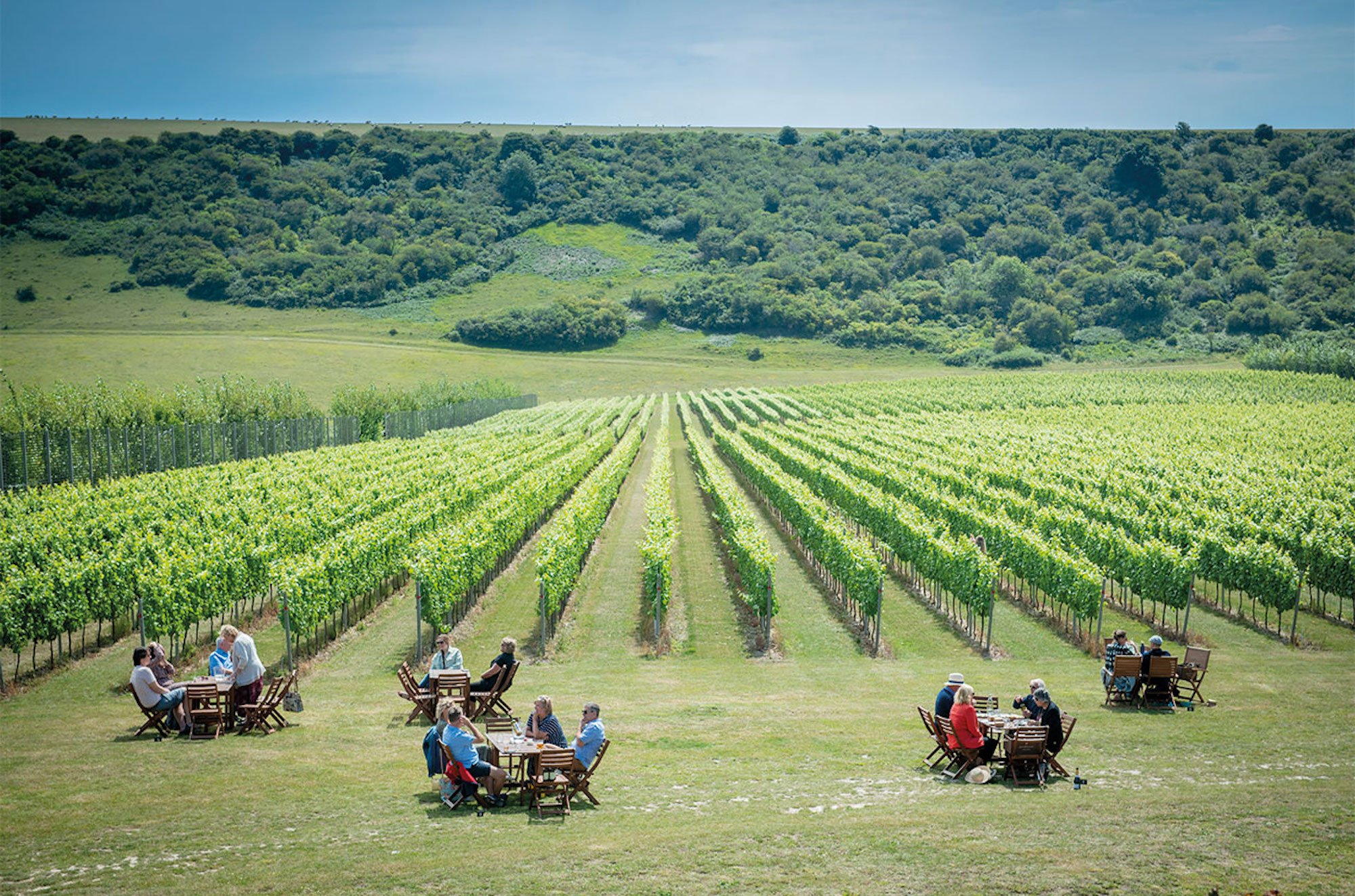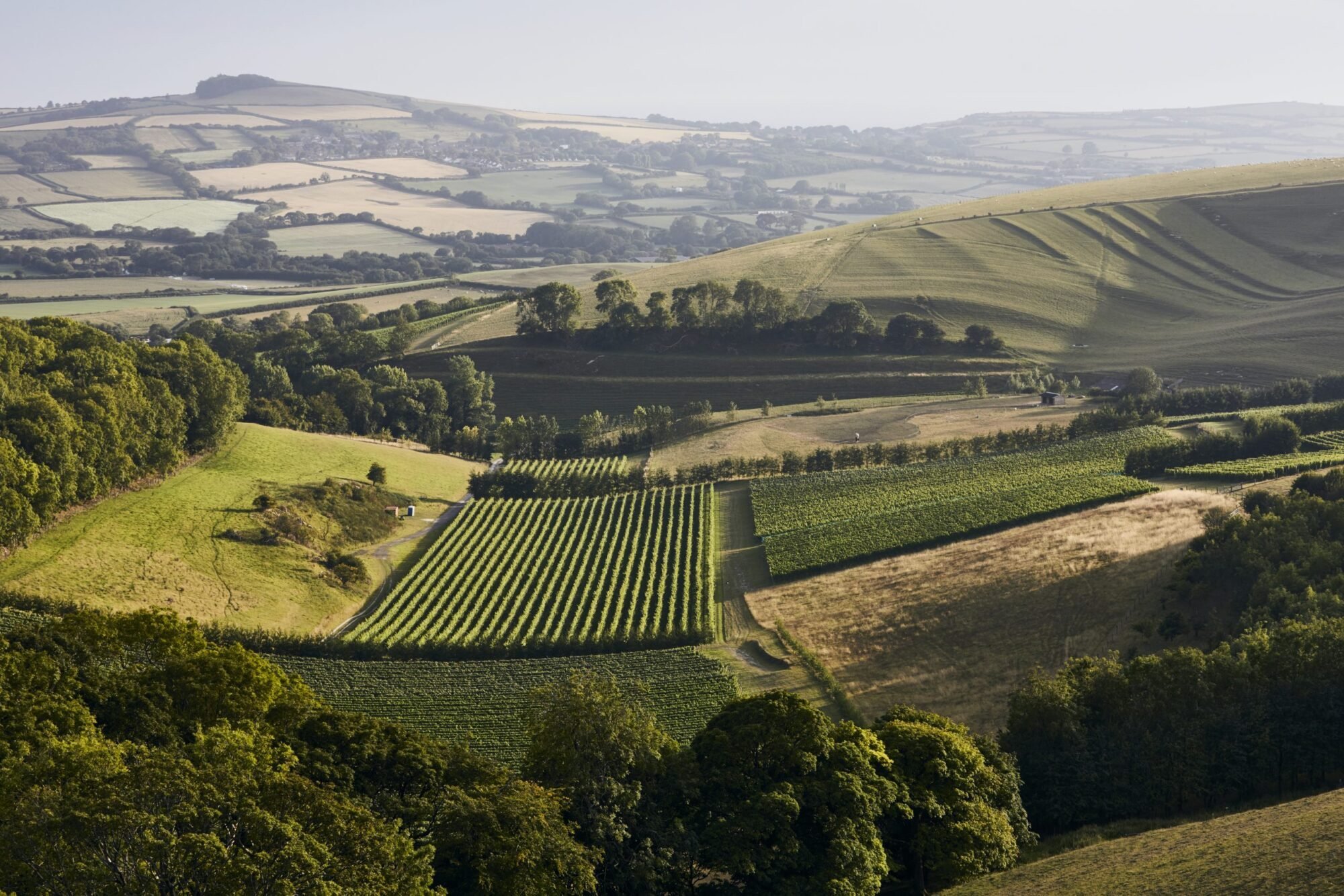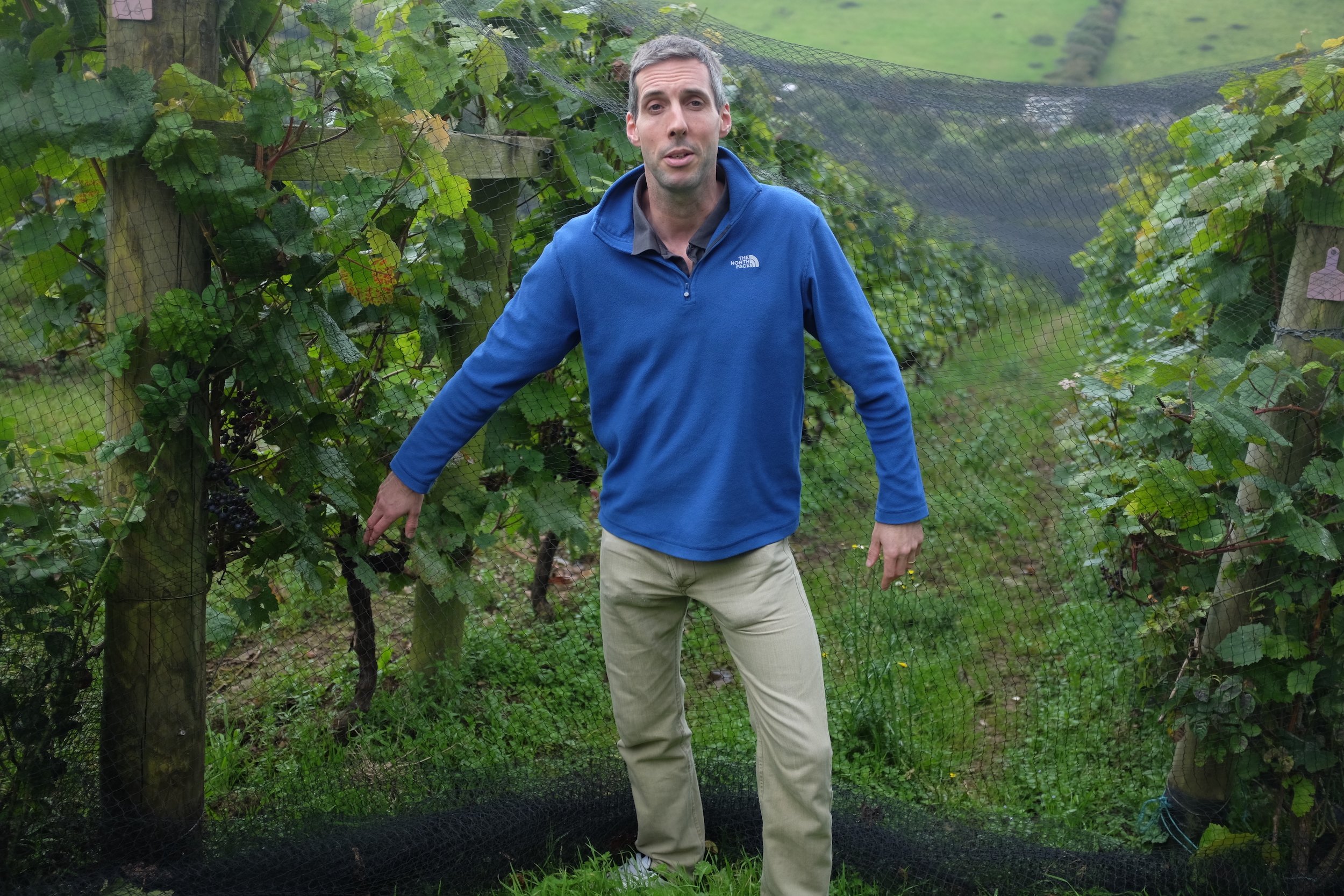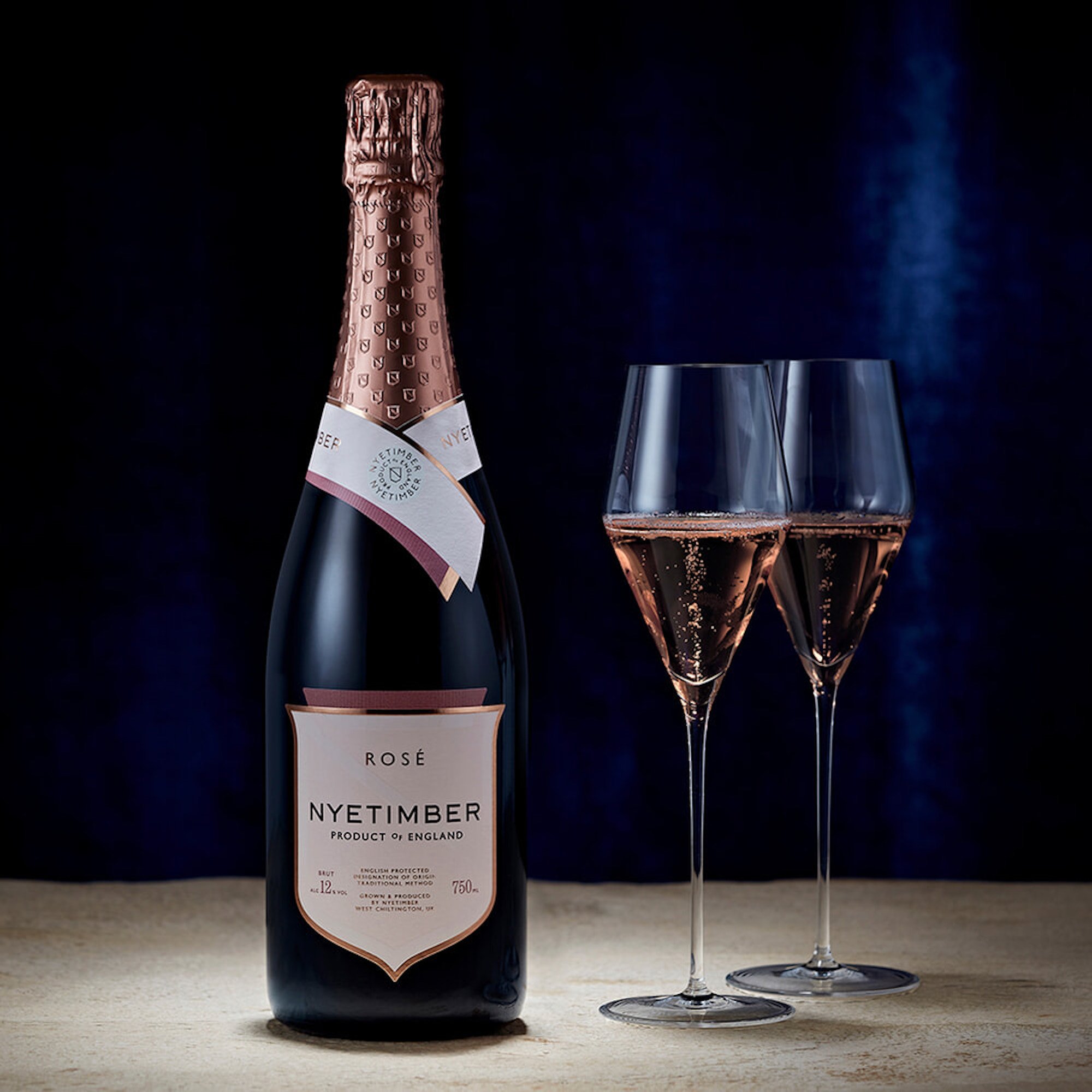Why is English Sparkling Wine Making a Splash?
Mild day in the vineyards Jo Hunt Photography
I first encountered English sparkling wine on a trip to London in 2017; a sample being poured at a Borough Market stall. Fresh from my Certified Sommelier exam, I freely admit I was unaware wine of any kind was being made in England. Nothing about its storied climate — cool, grey, damp — was especially vitis vinifera-friendly from everything I’d learned. Perhaps it should have been a clue, however, that the week I was there it was warm, sunny, and temperate. Having made several trips to the UK over the past few years, during which time the industry has expanded exponentially, I am happy to report myself a disciple of the category. Placing my bets now: English sparkling wine is ripe for a Judgment of Paris-style standoff with Champagne.
With a combination of climate change, favorable soils, available land, and rising talent, England’s wine industry, and especially its sparkling wine industry, has started to gain serious traction among consumers. (England generally being in the spotlight of late with this year’s coronation of King Charles III also doesn’t hurt.) According to a 2022 report by professional consortium Wines of Great Britain, England lays claim to 195 wineries, with vineyard plantings up 70 percent over the past five years. While there’s still time to be the person in your social circle who introduces everyone else to this growing, fascinating category, here’s a beginner’s guide to English sparkling wine.
English Sparkling Wine History
Camel Valley
It’s not that England has only recently started making wine. Honeyed still wines from English soils were being produced since many, many monarchs ago. It’s that warming temperatures and changing import tax laws, along with a general stirring in the 1980s and 90s toward export-worthy wines in many international wine regions, created a climate in which English producers started making wine with intent to be competitive beyond its shores. While the climate was warming, it was the impetus to lean more fully into the still cool-climate pedigree, as well as other advantageous conditions, that saw the beginning of the sparkling wine industry in England.
Many sources point to Nyetimber, whose vineyards were planted by Stuart and Sandy Moss in 1988 with the intent of producing traditional-method sparkling wine, as being the genesis of contemporary English winemaking. Nyetimber would go on to win major international competitions with some of its first bottlings, raising the profile of what the area could hope to achieve, and the growth has been exponential since. Several French Champagne houses have even snapped up land to get into the English sparkling game.
English Sparkling Wine Regions
Bride Valley vineyard
The majority of winemaking in England is centered in its southernmost counties, particularly the Southeastern counties of Kent, East and West Sussex, Hampshire, and Surrey. It is worth noting that, as the crow flies, Southern England is closer to Champagne than just about any other traditional method-focused sparkling wine region in Europe, excepting the cremants of Loire and Burgundy.
Winemaker Sam Lindo at Camel Valley
Several Central and Western counties in the southern part of England are also experiencing rapid growth. Cornwall boasts one of the oldest producers of English sparkling — Camel Valley — while wineries in Devon and Dorset are becoming dark horse favorites among those obsessed with the category. Stephen Spurrier, the famed English provocateur of the 1976 Judgment of Paris, began his winery, Bride Valley, in Dorset, producing the first vintage in 2011.
Grapes and Soil
Prior to the rise of English sparkling wine during the late 1980s and early 1990s, English winemakers had favored German grapes such as Müller-Thurgau and Reichensteiner, and primarily made still wines. It was the Nyetimber plantings that introduced classic Champagne grapes to the region, (in a move reminiscent of Trentodoc in the early 1900s,) Stuart and Sandy Moss aptly recognizing that not only the cool climate, but the chalky limestone soils of England’s southern counties presented ideal conditions for a Champagne-esque expression. Chardonnay, Pinot Noir and Pinot Meunier are now the most widely planted grapes in England by a large margin. Bacchus, Seyval Blanc, Solaris, Reichensteiner, Rondo, Pinot Gris, and Müller-Thurgau round out the top 10.
Producers of Note
Nyetimber
In addition to the aforementioned Nyetimber and Camel Valley, other large or notable producers who have had a significant role in the development and recognition of the category include Gusbourne, (who produced the official sparkling wine for Queen Elizabeth II’s Platinum Jubilee in 2022, and which is probably the easiest to find stateside,) Chapel Down, Harrow and Hope, Wiston Estate, (which comes with a South African winemaking pedigree,) and Breaky Bottom.
Contemporary Approaches
English vineyards
In addition to the classic, traditional-method sparklers that helped bring attention to England’s sparkling wine industry, champions of the category also cite various iconoclasts who are using the rising moment to color outside of the lines of classic Champagne-style wines. Pet-nats, sparkling reds, and traditional method expressions that utilize grapes other than the big three are starting to attract similar attention. Producers such as Westwell, Langham, Blackbook, Coates & Seely, and Hundred Hills are among those named as ones to watch who are helping broaden the category.
Where to Drink English Sparkling Wine
Sparkling wines at La Trompette
As of the end of 2022, only 4% of English wine was being exported, but this number is also on the rise, and the United States is just behind Scandinavia in terms of where most of those wines go outside of the UK. In major metropolitan areas, ask for English sparkling wine at your local wine store, or check online retailers.
If travel to the UK is in your cards, you don’t necessarily need to winery hop in order to enjoy these wines. In London, you’ll find many restaurants feature at least one English sparkling by the glass, and a handful by the bottle. To go a little deeper into the category, several restaurants and bars that feature more than one option include La Trompette, Oxeye, Sussex, and The Wine Bar at Fortnum and Mason, (also a good place to pick up a few bottles to take home, and London’s oldest department store.) Among several urban negociant wineries, London also sports one estate winery, Forty Hall Vineyard, accessible via public transport.







